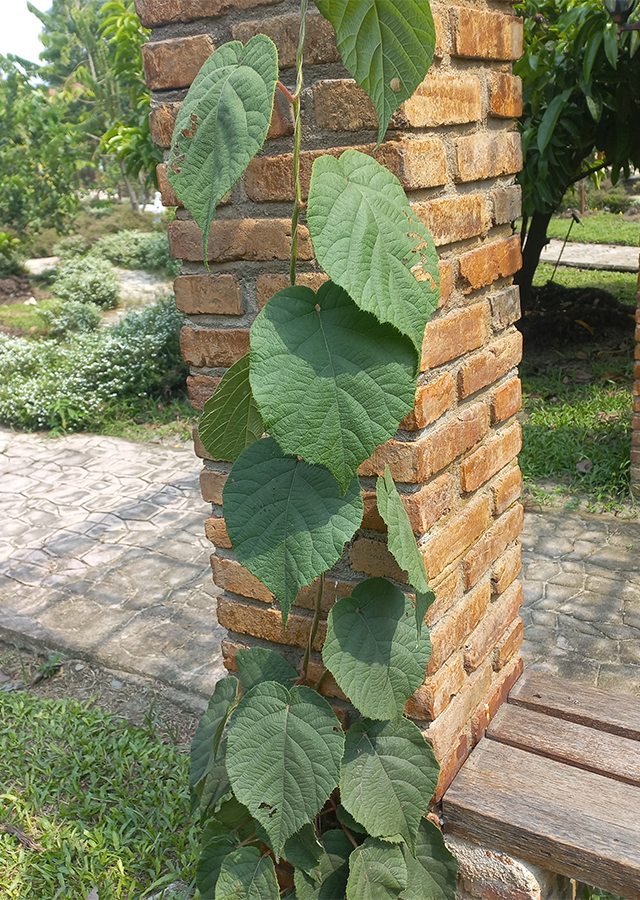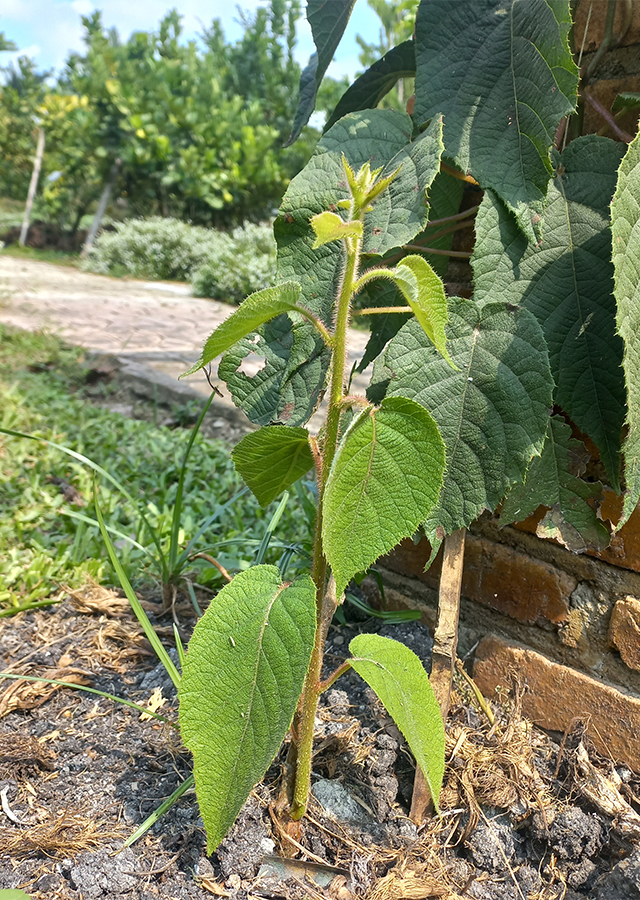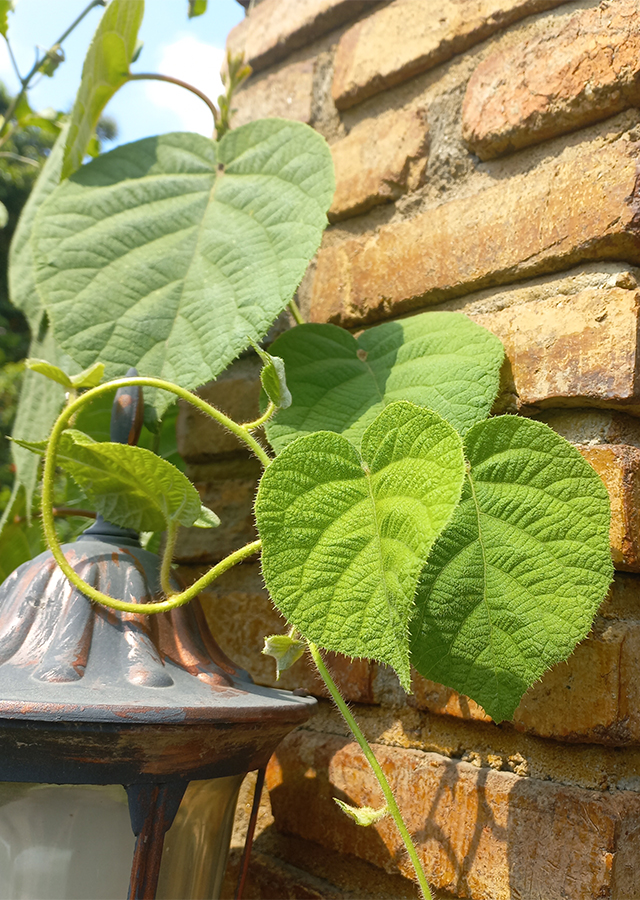Kiwifruit
Actinidia chinensis var. deliciosa (A.Chev.) A.Chev.
Actinidiaceae
Location in our garden
Orchard



Synonym
Actinidia chinensis f. chlorocarpa C.F.Liang
Actinidia chinensis var. hispida C.F.Liang
Actinidia chinensis f. longipila C.F.Liang & R.Z.Wang
Habitus
Climbers. A large, deciduous, climbing shrub, stems can grow to 30 m long
Part Used
Fruit
Roots
Stem
Growing Requirements
Full Sunshine
Need Shade
Habitat
Forest
Mountains
Overview
Actinidia deliciosa is native to China, mainly in the southern and central parts. It is widely cultivated in many countries, including New Zealand, Brazil, Chile, and Italy. The most common cultivar in commercial production is 'Hayward'. In China, the fruit is called 'yangtao', which means 'strawberry peach', and has been cultivated for at least 300 years (there are over 400 varieties in China alone). Wild fruits are also harvested. Currently, Italy is the world's largest producer of kiwifruit, followed by New Zealand and Chile. This fruit is a good source of vitamin C, vitamin E and various B vitamins and dietary fiber. Actinidia deliciosa is also used as an attractive ornamental plant.
Vernacular Names
Yang tao (Chinese), Mus (French), Chinese goosberry (New Zealand).
Agroecology
A plant of temperate to subtropical areas in China, where it is found at elevations of 200 - 2,600 m. It succeeds outdoors at least in the warmer areas of the temperate zone. The mature growth can tolerate occasional, short-lived temperatures down to about -15 °C, though young growth in the spring is very susceptible to frost damage. Prefers a sound loamy neutral soil. Succeeds in semi-shade but full sun is best for fruit production.
Morphology
- Stems - strong wood.
- Leaves - large, green, heart-shaped, leathery, up to 25 cm long, turns reddish in autumn.
- Flowers - creamy white to yellow, slightly scented and about 5 cm wide.
- Fruits - berries, brown, oval in shape, up to 8 cm long, covered with fine hairs. The edible flesh is bright green with many small black seeds.
Cultivation
- Propagated by seeds - Fresh seed germinates in 2 - 3 months at 10 °C, stored seed can take longer. When they are large enough to handle, prick the seedlings out into individual pots and grow them on in light shade in the greenhouse.
- By cuttings of softwood, half-ripe wood and ripe wood.
Chemical Constituents
Triterpenoids, saponins, and phenolic compounds (flavonoids, polyphenols, anthraquinones, and coumarins) vary in structure.
Traditional Medicinal Uses
- The fruits, stems and roots are diuretic, febrifuge and sedative. They are used in the treatment of stones in the urinary tract, rheumatoid arthralgia, cancers of the liver and oesophagus.
- The stem-juice is used in the treatment of gravel.
Part Used
Reference Sources
- Royal Botanic Gardens. Plants of the World Online: Actinidia chinensis var. deliciosa (A.Chev.) A.Chev. https://powo.science.kew.org/taxon/urn:lsid:ipni.org:names:60458895-2#image-gallery. 20-05-22.
- Useful Temperate Plants. 2021. Actinidia chinensis. http://temperate.theferns.info/plant/Actinidia+chinensis. 20-05-22.
- Vivek Kumar Raman, Sunil Kumar Chauhan dan Arijit Chaudhuri. Actinidia deliciosa: A Nature’s Boon to Modern Pharmacotherapeutics.Applied Pharmaceutical Science and Microbiology. https://www.researchgate.net/publication/344545197_Actinidia_Deliciosa_A_Nature's_Boon_to_Modern_Pharmacotherapeutics.
- Xirui He, Jiacheng Fang, Xufei Chen, Zefeng Zhao, Yongsheng Li, Yibing Meng dan Linhong Huang. 2019. Actinidia chinensis Planch: A Review of Chemistry and Pharmacology. Front. Pharmacol. https://doi.org/10.3389/fphar.2019.01236.


